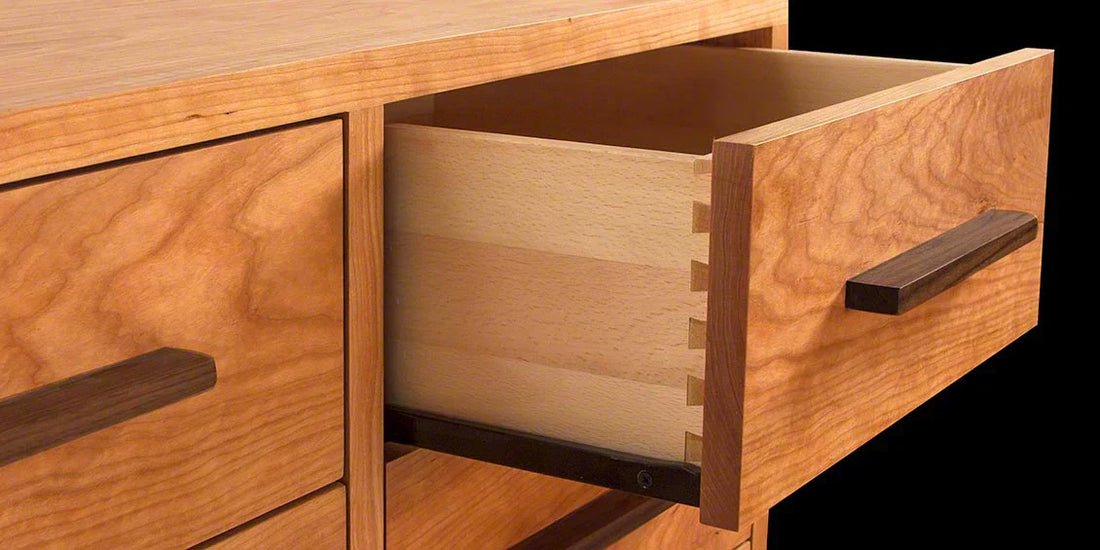At Vermont Woods Studios, our passion for sustainable craftsmanship shows in every joint, curve, and grain of wood. One of the most iconic signs of fine woodworking is dovetail joinery. This time-tested technique is not only beautiful but also incredibly durable—making it a hallmark of high-quality, solid wood furniture.
When you're investing in heirloom pieces that will last generations, dovetail joinery is a detail worth noticing. And when those pieces are crafted from sustainably sourced wood by local Vermont artisans, you're supporting both quality and responsible forestry.
What is Dovetail Joinery?

Dovetail joinery is a woodworking technique used to securely connect two pieces of wood, most often in drawer construction. It involves interlocking wedge-shaped projections (tails) and corresponding recesses (pins) that create a mechanical bond so strong it often doesn't require glue. The strength and visual appeal of dovetail joints have made them a staple in traditional and modern furniture alike.
Types of Dovetail Joints
There are several kinds of dovetail joints, each serving different structural and aesthetic purposes:
1. Through Dovetails
Through dovetails are the traditional technique that most people think of when they hear the term "dovetail joint." This technique involves cutting the pins and tails in both boards being joined. When the two boards come together, the dovetail can be seen from all sides.
2. Half Blind Dovetails

A half-blind dovetail functions just as a through dovetail joint, but pins and tails are only visible from one angle. In the above photo, for example, the dovetail joint wouldn't be visible from the front of the drawer box (assuming the piece of cherry attached to the box wasn't already obstructing the point of view).
3. Fully Blind Dovetails
Fully blind dovetails still implement the pins and tails visible in the through and half blind dovetail approach, but they're concealed from both sides. These are the hardest types of dovetail joints to recognize, and arguably the hardest to build.
4. Sliding Dovetails

The sliding dovetail joint is a bit different than the others on this list. In a sliding dovetail, there is only one pin and one tail. This technique is less glamorous than traditional dovetails, but still produces a very strong, long-lasting joint.
French vs. English Dovetails
The terms "French dovetail" and "English dovetail" are often misunderstood among furniture buyers, retailers, and even woodworkers. The term "French dovetail" is synonymous with a sliding dovetail. In contrast, an "English dovetail" could represent any of the other techniques mentioned above, including through dovetails, half-blind dovetails, and fully blind dovetails.
Why Dovetails Matter in Fine Furniture
When you see dovetail joinery in a piece of furniture, it's a strong indication that the maker invested time and skill into crafting it. Unlike mass-produced furniture held together with staples or fasteners, dovetail joints stand the test of time.
At Vermont Woods Studios, our commitment to sustainability means using solid hardwoods responsibly harvested from North American forests— and building furniture that lasts for generations to come.


